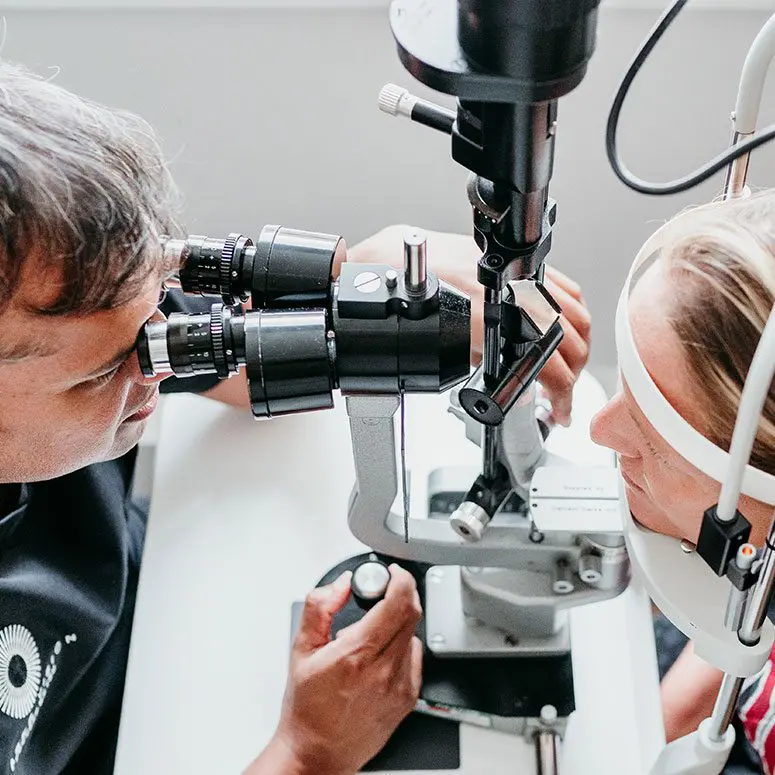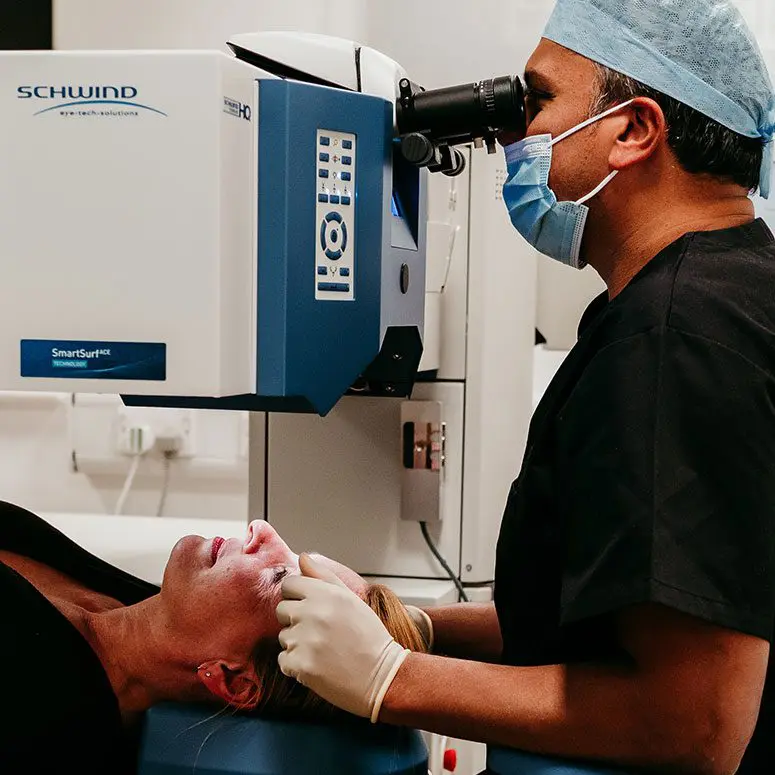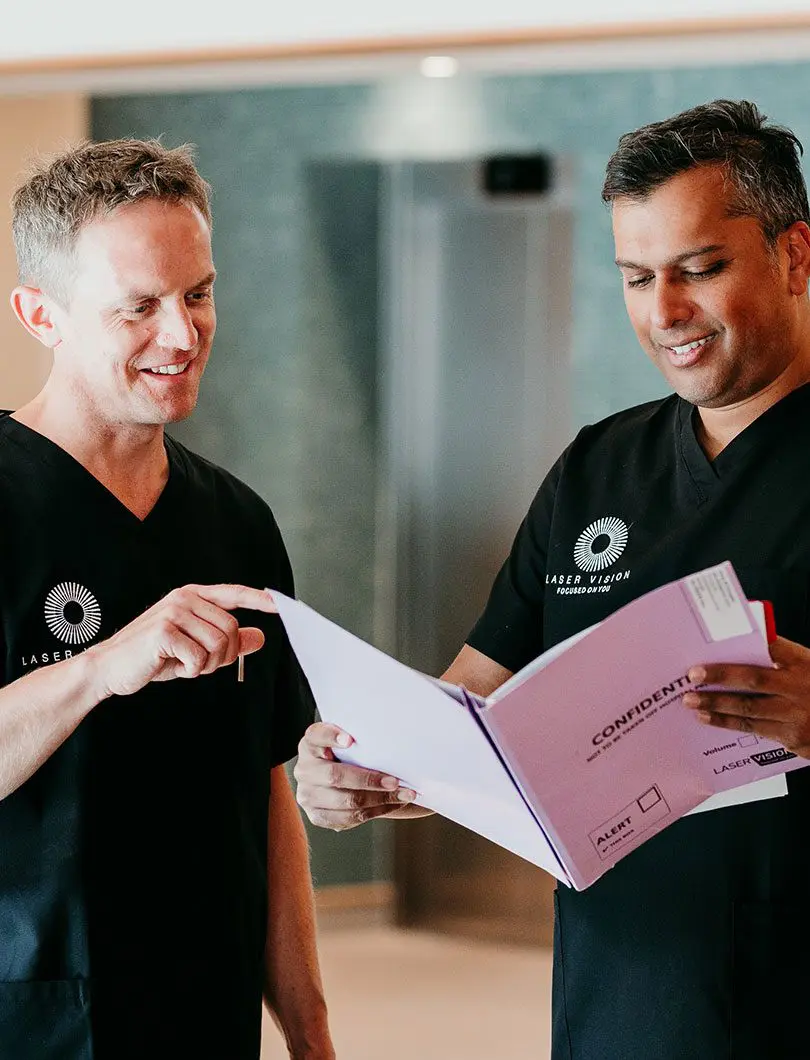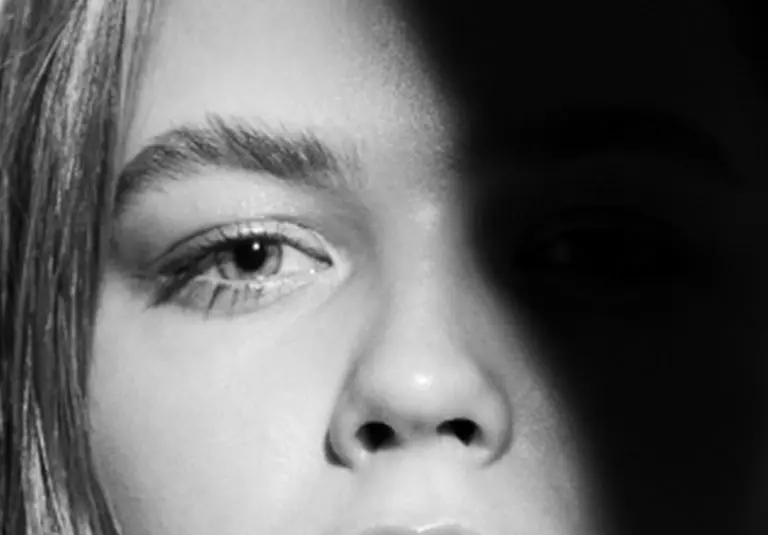- Lens Surgery

Piggyback / Secondary Lens

- Treatment

- Lens Surgery
Piggyback / Secondary Lens
A piggyback lens, also known as a secondary intraocular lens implant, is a safe and viable solution to improve vision after cataract or refractive lens exchange surgery.
What is Piggyback / Secondary Lens?
It has two main uses which include the correction of residual spectacle prescriptions and the reduction of negative dysphotopsia (a dark, rounded shadow in the periphery of the vision following uneventful lens surgery).
A small percentage of individuals following cataract or refractive lens exchange surgery will experience a minor under or over-correction of their vision. This may result in a patient experiencing blurred vision and the short-term need for spectacles or contact lenses.
There is a small degree of uncertainty when a synthetic intraocular lens is implanted into the biological system of the eye however vision can be fine tuned following surgery. One method to achieve the desired outcome is piggyback lens implantation.

On a side note, some individuals report a slight reduction in their field of vision (typically temporal) and the presence of a shadow following primary lens surgery. Our Laser Vision Ophthalmologists will first assess the retina (the photosensitive lining at the back of the eye) through a dilated pupil. Having confirmed that the retina is in good condition, these symptoms can be attributed to the visual phenomenon known as negative dysphotopsia.
Clinical research suggests the most likely cause of these symptoms is a slight difference in magnification of the new implanted lens compared to the original, natural crystalline lens. Again, a secondary piggyback lens can minimise this considerably.
Piggyback lenses are available in many different forms including monofocal, toric, multifocal and toric multifocal. This means that Laser Vision ophthalmologists are able to correct all types of spectacle prescription with this implant.
On a side note, some individuals report a slight reduction in their field of vision (typically temporal) and the presence of a shadow following primary lens surgery. Our Laser Vision Ophthalmologists will first assess the retina (the photosensitive lining at the back of the eye) through a dilated pupil. Having confirmed that the retina is in good condition, these symptoms can be attributed to the visual phenomenon known as negative dysphotopsia.
Clinical research suggests the most likely cause of these symptoms is a slight difference in magnification of the new implanted lens compared to the original, natural crystalline lens. Again, a secondary piggyback lens can minimise this considerably.
Piggyback lenses are available in many different forms including monofocal, toric, multifocal and toric multifocal. This means that Laser Vision ophthalmologists are able to correct all types of spectacle prescription with this implant.


How is it performed?
- 1.Local anaesthetic eye drops are applied to the eye
- 2.The area around your eye will be cleaned and a drape applied to ensure
- 3.A piggyback implant is gently inserted through a 3.0mm incision in the cornea and positioned in the ciliary sulcus in front of the primary lens























